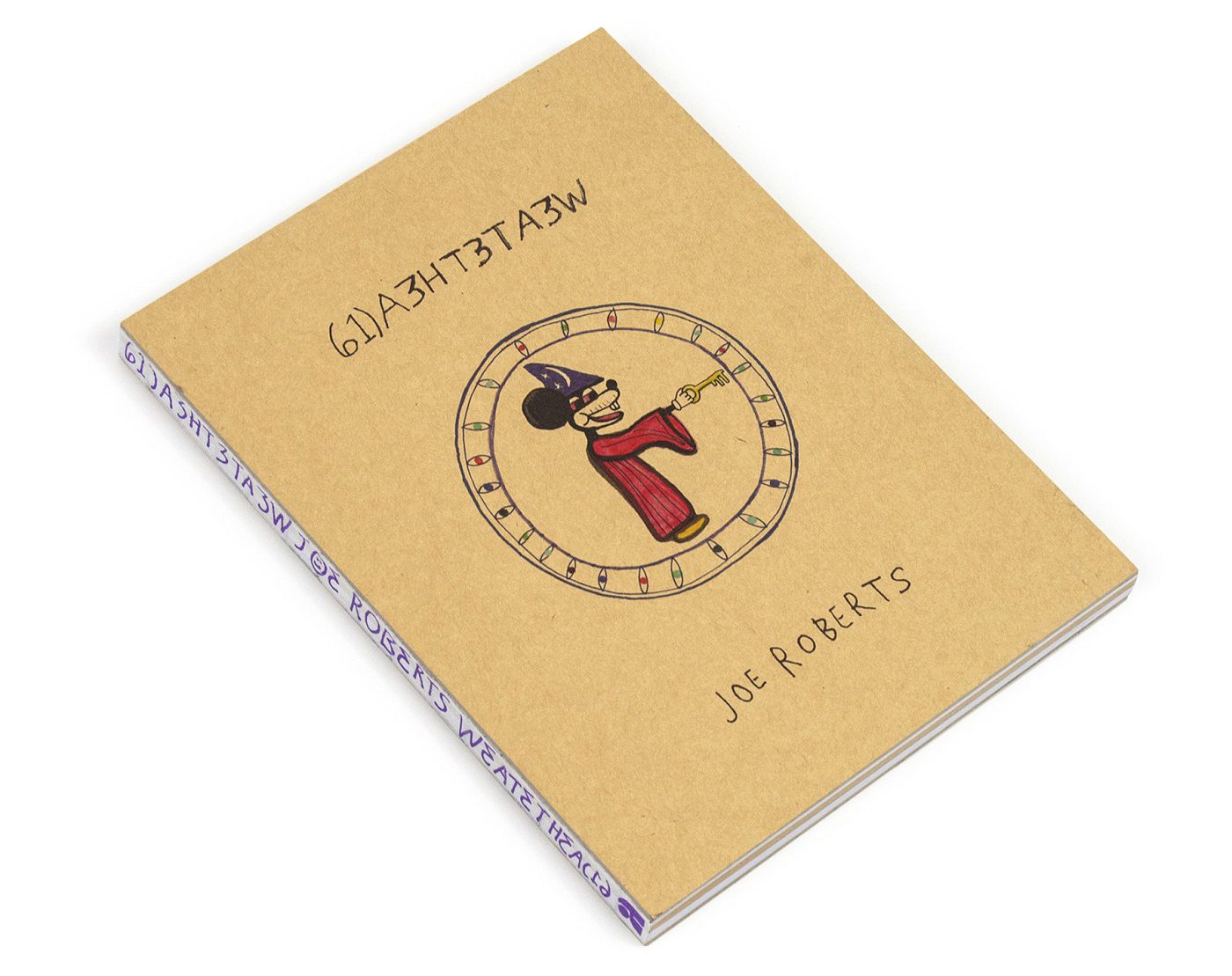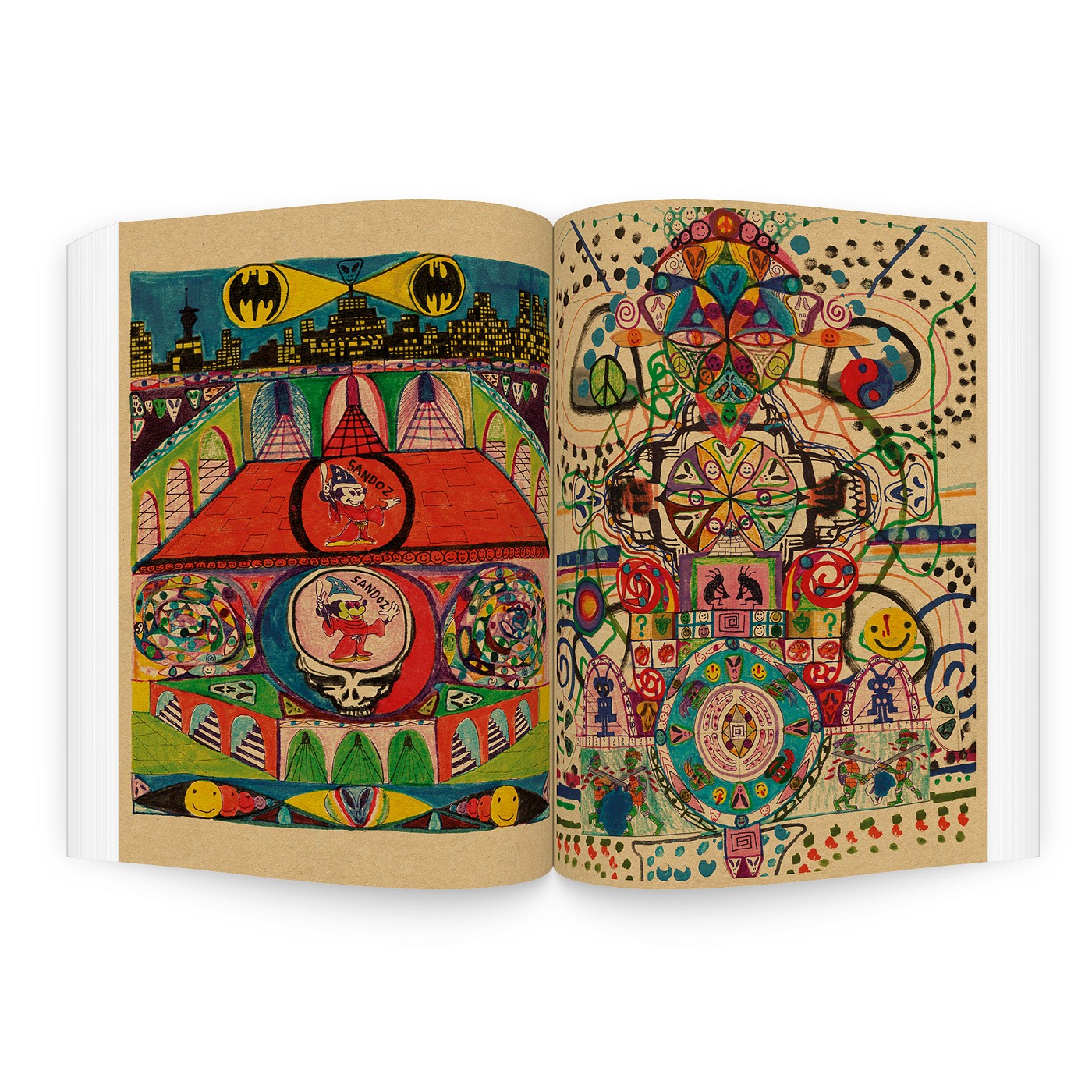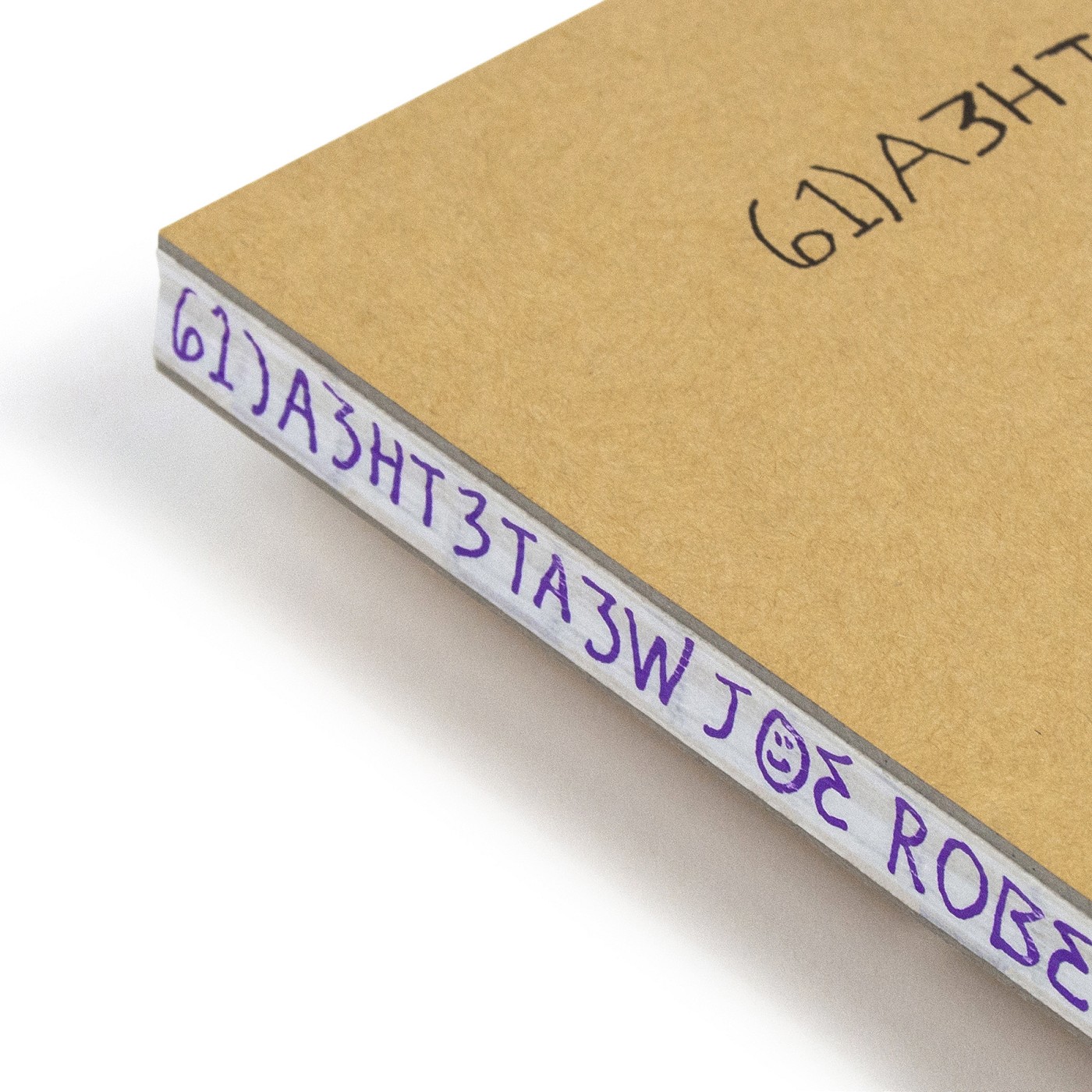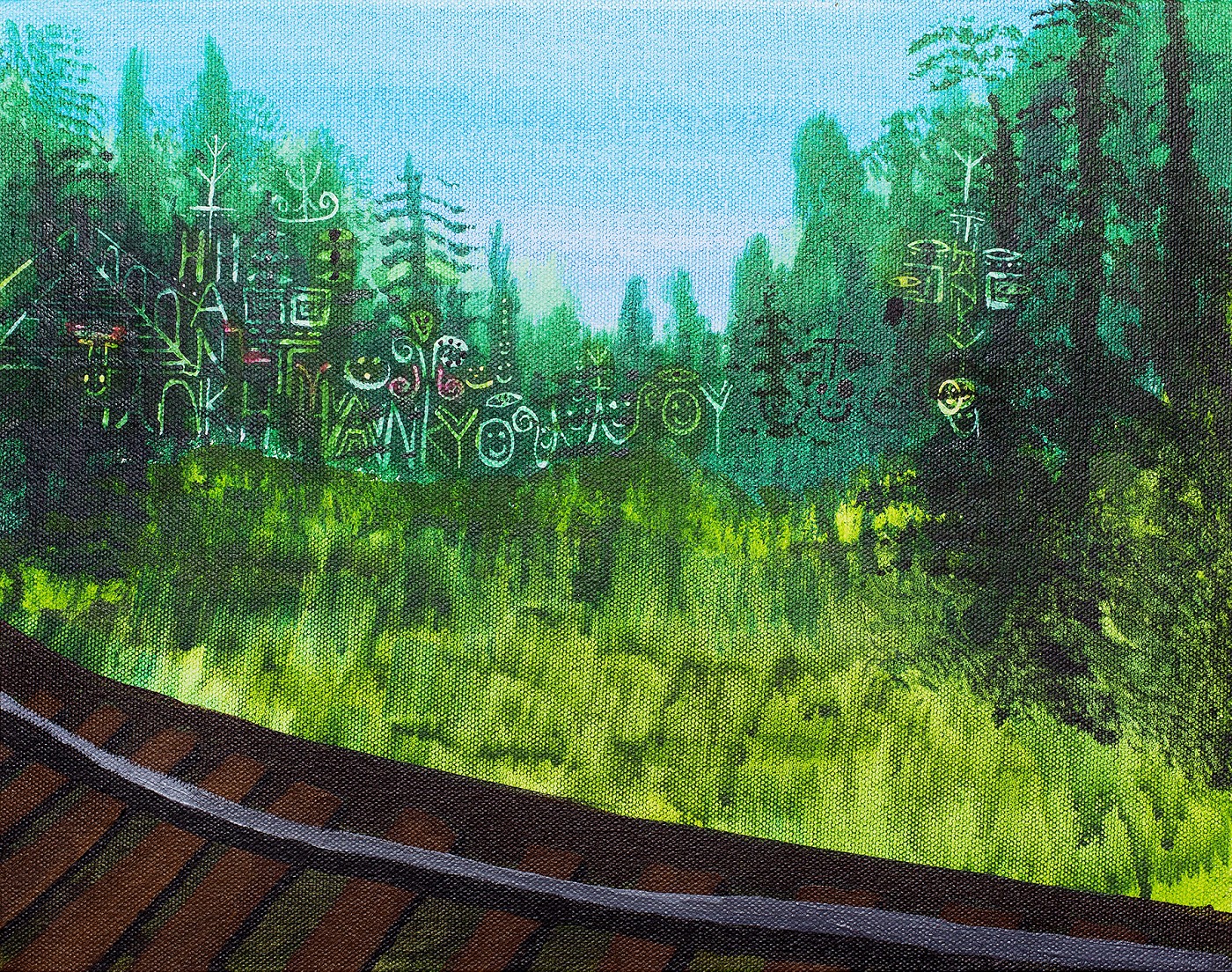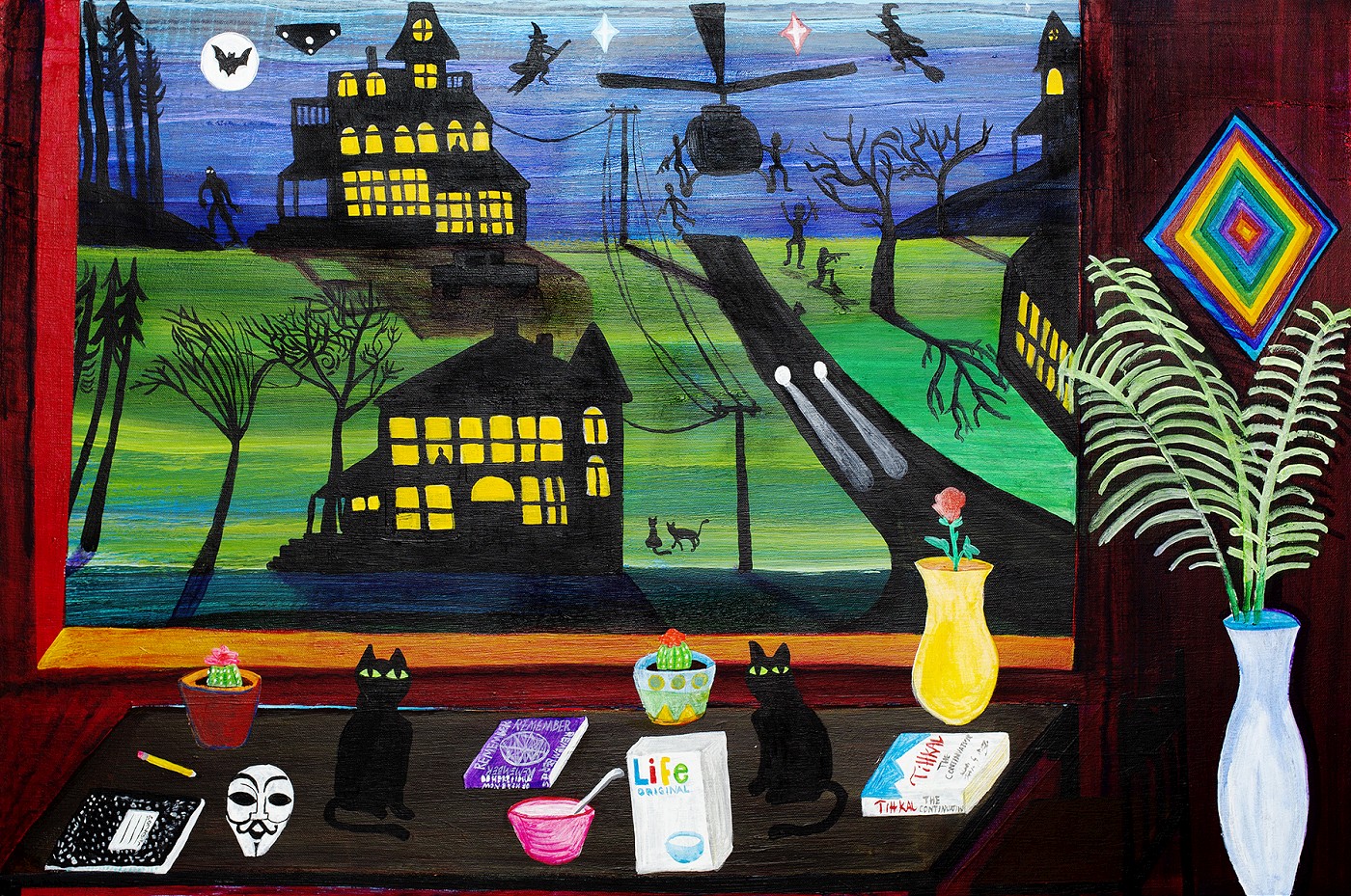San Francisco-based Joe Roberts recently announced a release of his second monograph-style book, We Ate The Acid (61)A3HT3TA3). An artist whose work developed a cult following in the art, skate, fashion and the “Supreme / Hypebeast” worlds is taking readers on a journey through “shamanistic imagery spiraling into a cacophony of shapes, colors, and mystic symbolism.”
Guided by a Fantasia-style Micky Mouse-like character sometimes called Weezy, which was the main image of his milestone collaboration with Supreme for their Fall 2017 line, the book features a forward by Hamilton Morris (Hamilton’s Pharmacopeia on Vice), and a conversation with gallerist and actor Leo Fitzpatrick (director of Marlborough Contemporary).
In his work, Roberts regularly incorporates collage, diorama, drawing, and painting, which together form psychedelic scenery in which surreal narratives are told. Balancing between fear and curious euphoria, and just like many reality-alternating experiences do, the book features distorted pop culture references in scenes where countless arches and pathways serve as portals to the artist’s psyche. The effect of this unprecedented disorienting journey is accented with an unpretentious declaration: “The way you choose to explore it is the way you choose to explore it. Make sure you take notes.”
Created like an art piece itself, with various paper textures bound in a mystic-looking “skeleton” manner, the book will be released on December 4th with launch events and accompanying exhibitions coming up in San Francisco and New York. As part of the 1st edition, an undisclosed number of artist prints will be placed inside a handful of books available through Anthology Editions.
We got the chance to have a look inside this book, and talk with the artist about this extraordinary publication:
Arrested Motion (AM): How long was the book in the making?
Joe Roberts (JR): The book was made in about a years time. I worked closely with the team at Anthology Editions to incorporate special papers and interesting binding techniques. The work included in the book was made over roughly a five year period.
AM: Were the works created specifically for this publication?
JR: The work was not really made with a book in mind. Some of it was, but a lot of it was developed as a way for me to integrate my experiences with psychedelics. The paintings and drawings are my attempt to make some sense of what I encountered.
AM: What image/part of the story would be your personal highlight/favorite?
JR: My personal favorite part of the book is the introduction by Hamilton Morris. He has a great way with words.
AM: Is the sequel in the making?
JR: This is my second book, so, we will see…



